Alumni on the Clinical Rotation that Changed Them
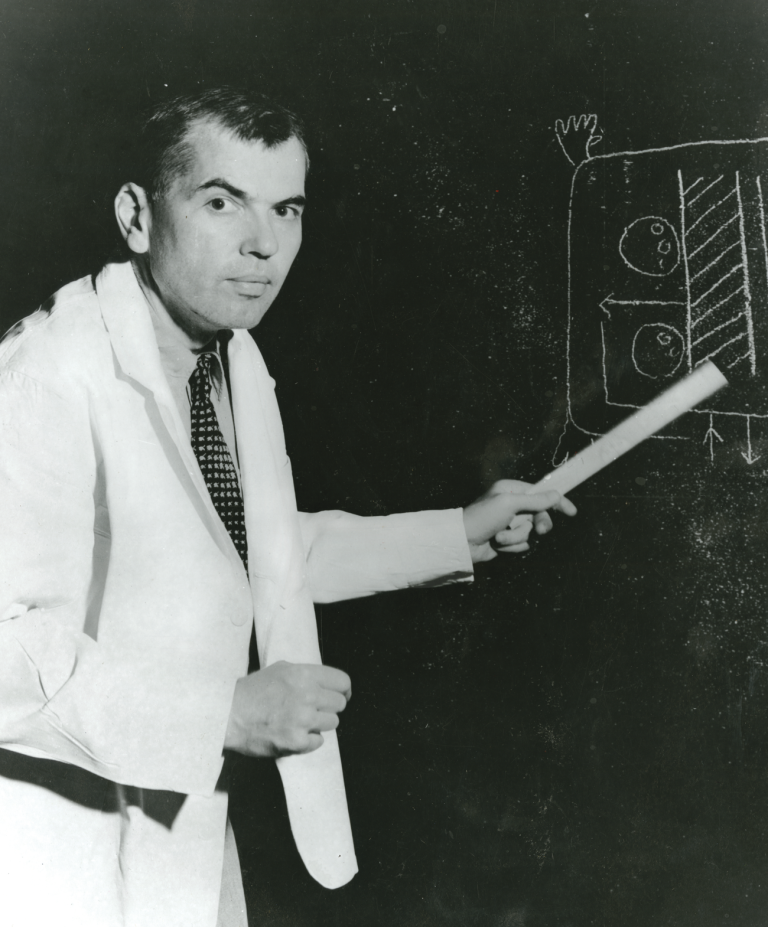
John D. Bullock, MD ’68
Surgery at the Beth Israel with Bill Silen. I knew I wanted to become an ophthalmologist, but I loved watching him. He was a beautiful surgeon. When he opened the belly or the neck, it looked like photographs from an anatomy text. I tried to emulate him when I was doing all my operations. I would tell my fellows, “You can’t rush perfection.” That’s what I learned from him. In practice for 25 years, I performed more than 10,000 operations and was never sued. Thank you, Bill!
John B. Livingstone, MD ’58
Four of us stood on rounds during our clinical rotation in internal medicine in 1957. We were listening to a visiting expert in infectious diseases when he proclaimed: “Gentlemen and lady, listen up, as I’m going to make a biblical statement: The viruses shall inherit the earth.” Although I felt helplessly vulnerable and then curious about my own reaction, it took the next 64 years, including witnessing the recent burnout of clinicians caring for COVID patients, for me to fully embrace the truth of what he said.
My response to a profound statement made on a clinical rotation was a trailhead for my medical teaching and research career, including co-authoring a textbook on the power of relationships in health care in 2016.
Sheila Hafter Gray, MD ’58
My third-year medicine rotation at Boston City Hospital—that’s where I learned how to be a physician.
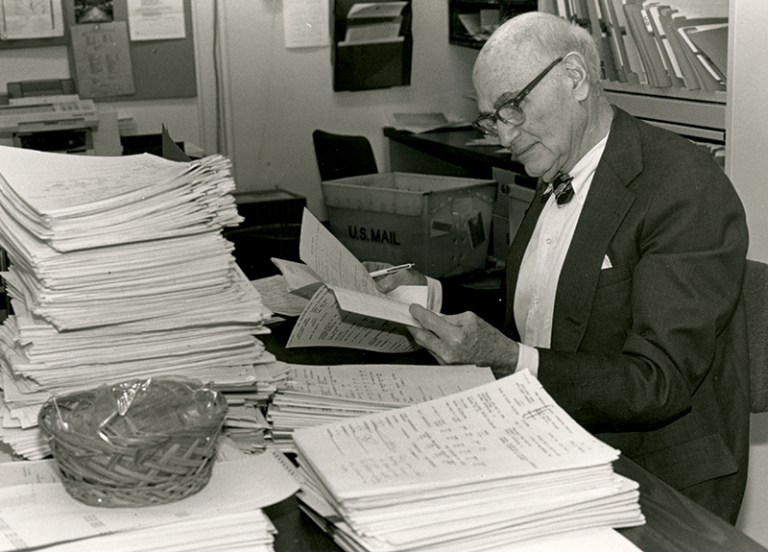
Thomas Bettman, MD ’69
Anesthesia at the Brigham under Leroy Vandam. First day on the rotation I did not understand the difference between green and blue gas cylinders. Catastrophe was averted by the watchful eye of Vandam. Afterward we had a long, calm, insightful discussion of errors in medicine, especially related to supervising less-experienced people, but also recognizing the key roles of humility, personal vigilance, and mastery of information related to clinical care. Readers may find the Closed Claim Project, under the aegis of the American Society of Anesthesiologists, to be relevant here.
Elizabeth Wise, MD ’78
Internal medicine at Peter Bent Brigham, where we learned the history of the coronary care unit’s “Lown chairs,” which were recliners for patients born from Bernard Lown’s insight that patients should not in fact be kept on strict bed rest after heart attacks. So he got them up, and in so doing reduced the number of pulmonary emboli.
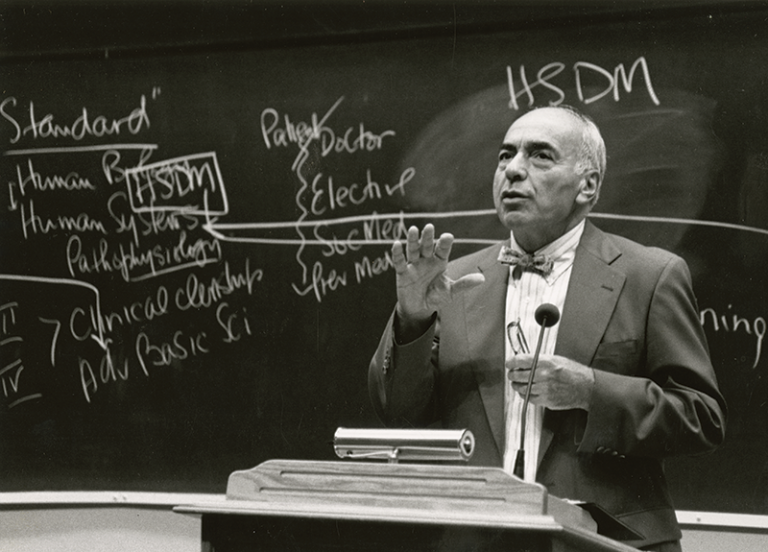
Christopher Smith, MD ’89
The intense growth of my medicine clerkship stands out in my memory as a remarkable life-changing experience. We learned to draw blood tests on our patients at the West Roxbury VA before morning rounds, made gram stains, followed our patients to the OR, and nervously presented their case histories in front of peers, resident teams, and professors.
I recall the thrill of poring over our patients’ medical records searching for clues to their illnesses and reading Harrison’s Principles of Internal Medicine late at night in the Brigham library. We formed bonds with our patients, who tolerated our earnest but awkward efforts. And most important, we were nurtured by amazing clinicians, including Sanjiv Gupta (charming, witty, and always ready with an unlimited supply of clinical pearls) and Dan Federman, MD ’53, the kindest and most inspirational teacher I have ever had.
Those three months were the centerpiece of my HMS education. They instilled in me a foundational set of guiding principles and a deep passion for the practice of medicine that motivate and sustain me to this day.
Don Dickerson, MD ’57
During my senior year surgery rotation at the Brigham I rotated through the cardiac surgery department under Dwight Harken. This was before the pump. After he had opened the stenotic mitral valve with his finger he said to me, “Come here and [put] your finger in the aurical.” I could feel the mitral valve open and close on my finger. How’s that for medical drama?
Samuel (Bob) Snodgrass, MD ’63
MGH medicine, fourth year. I worked hard and did many procedures, which clearly needed to be done.
Barry Zitin, MD ’73
Surgery at MGH. It was in the days when we worked every other night and every other weekend, so we had two months of total immersion. I had a dream team of house staff: Andy Warshaw, MD ’63, Jim May, Cary Akins, MD ’70, and Arlan (Skip) Fuller, MD ’71. They were terrific teachers and physicians—smart, dedicated, caring. I was never so tired or so engaged. When I returned to the outside world, I realized that I missed that world and missed getting to know the patients better. I ended up with a very fulfilling career in psychiatry.
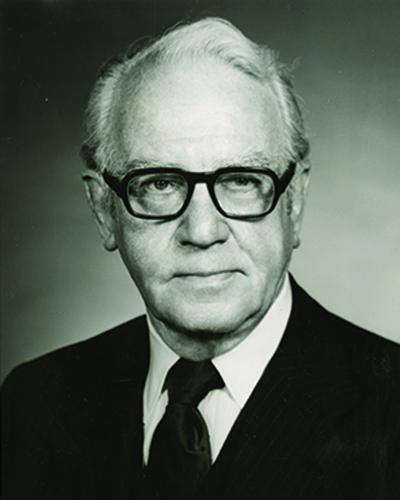
Bruce Barnett, MD ’75
Among my clear memories of so many superb rotations a few stand out. Harvard’s Introduction to the Physical Examination taught me to consider first my patient’s chief complaint. That has been the foundation of my clinical practice ever since. Oddly, perhaps, the elective rotation that introduced a small group of my class to the phenomenon of hypnosis has been useful in my clinical and personal life to this day.
Calie Santana, MD ’02
My pediatrics rotation. I met children with cancer whose parents couldn’t visit them from New Hampshire due to cost. Patients with asthma whose caretakers smoked around them. The curriculum didn’t reference or unpack social determinants of health, but the hidden curriculum was undeniable. I took these cases home with me every night and tried to think of structural upstream solutions without having the vocabulary. It was eye-opening and a bit traumatic. I decided I couldn’t do peds as a career.
Christopher Baker, MD ’74
In my third year, I spent two months with the liver transplant team at Addenbrooke’s Hospital in Cambridge, England, working with Maurice Slapak, who had been my preclinical mentor at Boston City Hospital. In addition to solidifying my decision to pursue general surgery as a career, it helped me crystallize my attitudes toward medical ethics.
David Sachar, MD ’63
Outpatient clinic when I correctly diagnosed a young housewife who complained of fatigue with myasthenia gravis. On her third visit, she mentioned having double vision. She taught me the importance of listening carefully to patients. They are telling you the diagnosis!
Dick Peinert, MD ’73
Radiation therapy, one of the few rotations where the students were treated like colleagues. Things are probably different now, but back in the day a lot of professors really went out of their way to “teach” us how little we knew versus teaching us what we needed to know. Sam Hellman, Bill Shipley, MD ’66, and Tony Piro (later a colleague when I went into practice) were terrific teachers and kind men.
Edmund Lee, MD ’96
Psychiatry. The consequence of emotional trauma was difficult to witness. However, that experience has informed my practice of dermatology on a regular basis.
Elizabeth Dreesen, MD ’87
The frank brutality of my surgical clerkship. Every other night. Rounds at 4 a.m. before the T started running. I asked for parking so that the other woman student and I could safely reach the hospital in the dark. The male students cried discrimination when we got one. Still, every day for two months, my car safely ferried one of us to and from the hospital. I liked surgery, but the gratuitous nastiness of the clerkship sent me to OB for a year, before I lateraled to surgery in a nicer place.
George Hill, MD ’57
Medicine, at the Boston City Hospital. William Castle, MD 1921, and his faculty gave full responsibility for each medical ward, about thirty patients, to an intern and his fourth-year medical student. The two of us saw and initiated treatment for two patients on the ward who developed a femoral embolus and a stroke. I assisted in a gastrectomy for one of my patients. I made a diagnosis that had been missed in the hematology clinic and I did a pericardial tap. An awesome time.
George Lewinnek, MD ’67
My most vivid memories are of three months of general medicine in my third year, which is strange, given that I always had a surgical bent and became an orthopedic surgeon. I enjoyed the diagnostic challenges and the applied physiology. I also remember getting into trouble twice, in both cases overstepping my boundaries trying to protect patients.
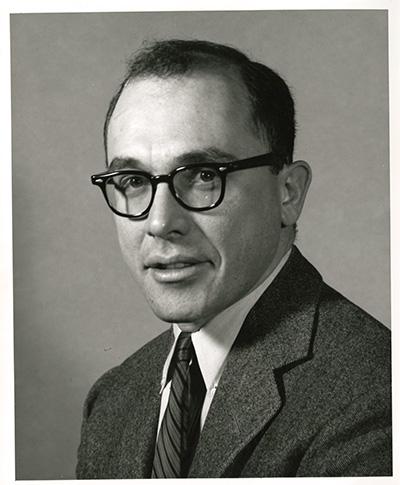
Harold Sox, MD ’66
Pediatrics. I loved surgery, my first rotation, but pediatrics immersed me in the world of clinical reasoning, and I was hooked for life. In the end, I became an internist.
Jan Polissar, MD ’61
Public health lectures by David Rutstein. He pointed out that the greatest effects on public health are not always made by physicians. I believe my classmate, Mike Lane, MD ’61, who spearheaded the eradication of smallpox, saved more lives than any other physician in the modern world.
Jim Adelstein, MD ’53
Fuller Albright, MD ’24, was quite disabled by Parkinson’s disease, for which there was then no good treatment. He traveled to and from MGH in a vintage two-door sedan. The medical student of the month was his driver—picking him up at home in the morning and returning him in the evening. During the day, I shadowed him when he was seeing patients, leading discussions in the endocrine and bone clinics, in lab meetings, or making rounds. I learned much from him about endocrinology and human resilience.
Michael Rasminsky, MD ’64
HMS third-year sessions with Simeon Locke at Boston City Hospital propelled me toward clinical neurology/neuroscience. Years later, at lunch with him and a mutual colleague in Montreal I told Simeon that my decision to become a neurologist had been largely influenced by that initial exposure to him. He turned beet red, stammered something unintelligible, and changed the subject. I resolved that the only possible thanks for that early experience was to be the best teacher possible with the students under my tutelage.
Martin Prince, MD ’85
Surgery was amazing. Especially the surgical ER rotation at MGH, where we were sewing up lacerations and doing real frontline patient interactions.
John Carmody, MD ’65
Third-year clinical rotation in surgery at MGH. I had really struggled my first two years with basic science and was scared to death that first morning, when two of my classmates and I met with our teaching resident. He introduced us to our very first real patient. “Do an H & P, I’ll be back in thirty.” He began by asking my two colleagues very basic questions, and neither had a clue about Dx or Rx. I could not believe it. “John, tell us about our patient.” I knew then I belonged at HMS.
Kara Wong Ramsey, MD ’09
I did not speak any Spanish when I enrolled in rural medicine in Latin America as a fourth-year med student. With only one month of Spanish lessons at the med school, I was placed in Hospital Nacional de Niños in Costa Rica. It was a humbling experience as I struggled to understand and participate in the conversations in Spanish going on around me. I reflected on how non-English speakers must feel in the U.S. medical system and the importance of diversity in physician training and recruitment.
Kathy Glatter, MD ’93
I really enjoyed doing a plastic surgery elective at MGH with a well-known, successful surgeon there. He had gold-plated instruments, which really impressed me, and he let me tap the hammer to break the patient’s nose that he was reshaping.
Tamara Fountain, MD ’88
Psychiatry was my first rotation, so perhaps there was some bias in my memory there. It was the first time I realized, with horrifying clarity, that the mind can get sick just like any other organ or body system. A person with a bad heart is still the same person we always knew. A person with mental illness challenges the essence of how we think of them as a person. Perhaps this is what I found so destabilizing about this clinical experience, and apparently so memorable as well.
Karen Singer, MD ’77
Plastic surgery. I thought anything was possible being a plastic surgeon. I performed my first surgery, an excision of a lipoma. Not a big deal later, but it sure was then. The patient was perfect, and the operation went well. Gave me confidence. I saw remarkable surgeries, breast reconstructions, facial reconstructions after trauma, abdominoplasties. I saw the difference one could make for so many people.
Karl Singer, MD ’67
The course I remember the most was a one-month epidemiology elective taught by David Poskanzer, MD ’54, a neurologist at MGH who had been in the Epidemic Intelligence Service at CDC. I have been using many of the lessons I learned in that course over the past seven months of the pandemic. I also remember our final meeting, when David took us all to dinner at Locke-Ober.
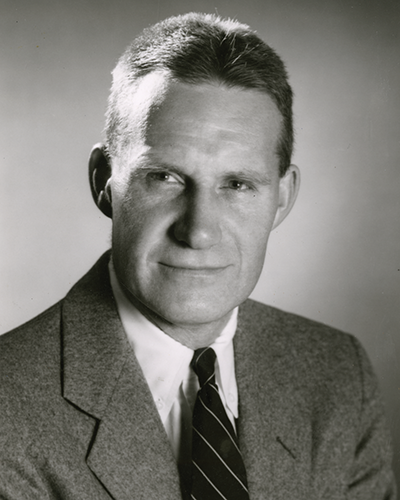
Peter Zawadsky Jr., MD ’68
My pediatrics rotation at Boston Children’s Hospital was probably my most memorable. The teaching staff was very motivated to educate medical students. Physician-in-chief Charles Janeway was an excellent advisor and helped me with my career development.
Laurie Green, MD ’76
General surgery, with Frannie (Francis) Moore, MD ’39. He was a larger than life Renaissance figure who shared my interest in medical history. Yet he hadn’t quite processed the onslaught of female medical students at a time when there were no female surgical trainees. For the first time, I saw the benefits of military training: rigor, devotion to duty, precision, stamina.
Mary Flowers, MD ’78
My residency at Brockton Hospital. My first night on call I had a veteran who ended his life by jumping from a second-story window.
William Goodson, MD ’71
Surgery clerkship with William Silen, who demanded more of himself than from us, and the chief resident, Gary Manchester, MD ’64, who was excited about his work and taught us with the same enthusiasm. He had a reverence for clinical care, and he went out of his way to be certain we learned from the instructive and unusual situations.
Marvin Bittner, MD ’76
Psychiatry at Mass Mental Health Center, in Spring 1974, was a rich blend of education and clinical service, and it incorporated a wide range of viewpoints from the frontiers of psychopharmacology to a psychoanalyst who eschewed any drug therapy. The clinical presentations of the patients were dramatic, and the didactic material utterly engaging. The insights of the faculty complemented their unwavering commitment to teaching. That experience set a high bar for clinical rotations.
Joseph Savino, MD ’84
The rotation was surgery, but the impression came from role models. I had dinner at the home of a senior cardiothoracic surgeon. Both at the hospital and at home, his life seemed to have much purpose, his stories would have been science fiction only a few years earlier. Lessons of Elio Raviola applied in the OR, functional anatomy—it was exciting. My interests changed but I’ve forever sought tangible results: ones we can see, touch, measure in the now.
Robert Colvin, MD ’68
Surgery at MGH, an afternoon two-hour small group seminar with the chief of surgery, Paul Russell.
Robin Smith, MD ’88
I remember being on rounds at the Brigham and the senior resident asking questions Socratic style. When it was my turn to answer, I replied that I did not know but that I would be happy to learn if he wanted to teach me. He stopped rounds, and I thought I was done. Then he said, “That is the smartest thing I’ve ever heard a Harvard Medical student say. The first thing you need to know is what you don’t know.” That has stuck with me throughout my career.
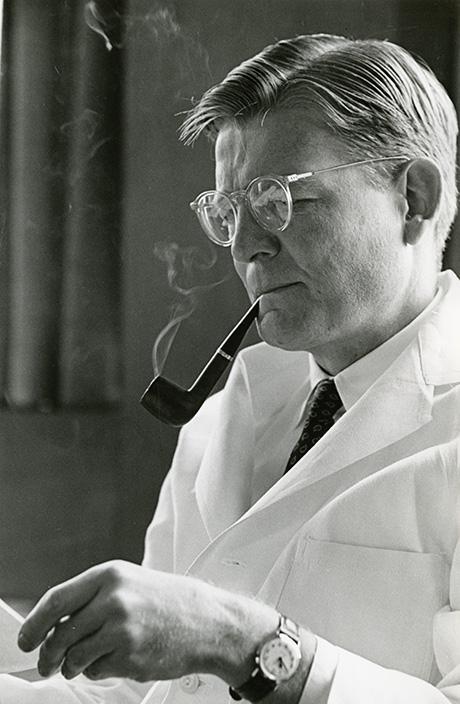
Steven Swerdlow, MD ’75
You might think it was my pathology rotation and getting to go to the great William Meissner’s home that was special, but it was more the moments dripping with sweat while sewing up a gash in the MGH ER, the moments dripping sweat on a patient in cardiology because I was having fevers but you were not supposed to call in sick back then, or the time I asked not to be sent to review a massive set of charts on a patient with an obvious hip fracture. That wasn’t my idea of learning orthopedics.
Priscilla Slanetz, MD ’91
I became a radiologist not because of my radiology rotation, but because of Stanley Wyman, MD ’39, an esteemed diagnostician who could tell me everything about the patients I was following on the medical wards just by looking at a plain radiograph of the chest or abdomen. Back in those days, cross-sectional imaging with CT was used only sparingly. The visits to the radiology reading room made me aspire to become an expert at interpreting “shadows” on all imaging modalities.
Suzanne Boulter, MD ’68
Boston City Hospital was an incredible environment to learn about the care of patients prior to the enactment of Medicare. Ambulances brought the sickest, the poorest, and people of color to Boston City where a dedicated and distinguished group of house staff and attendings provided them all with top-notch care. As a medical student in internal medicine, the high-level teaching rounds supplemented comprehensive, hands-on learning opportunities about patient care.
Richard Sogg, MD ’56
Pediatrics as a senior med student. A little girl was dying of pulmonary edema; she said she felt like she was drowning. I will never forget her terror.
Images: Center for the History of Medicine, Francis A. Countway Library of Medicine